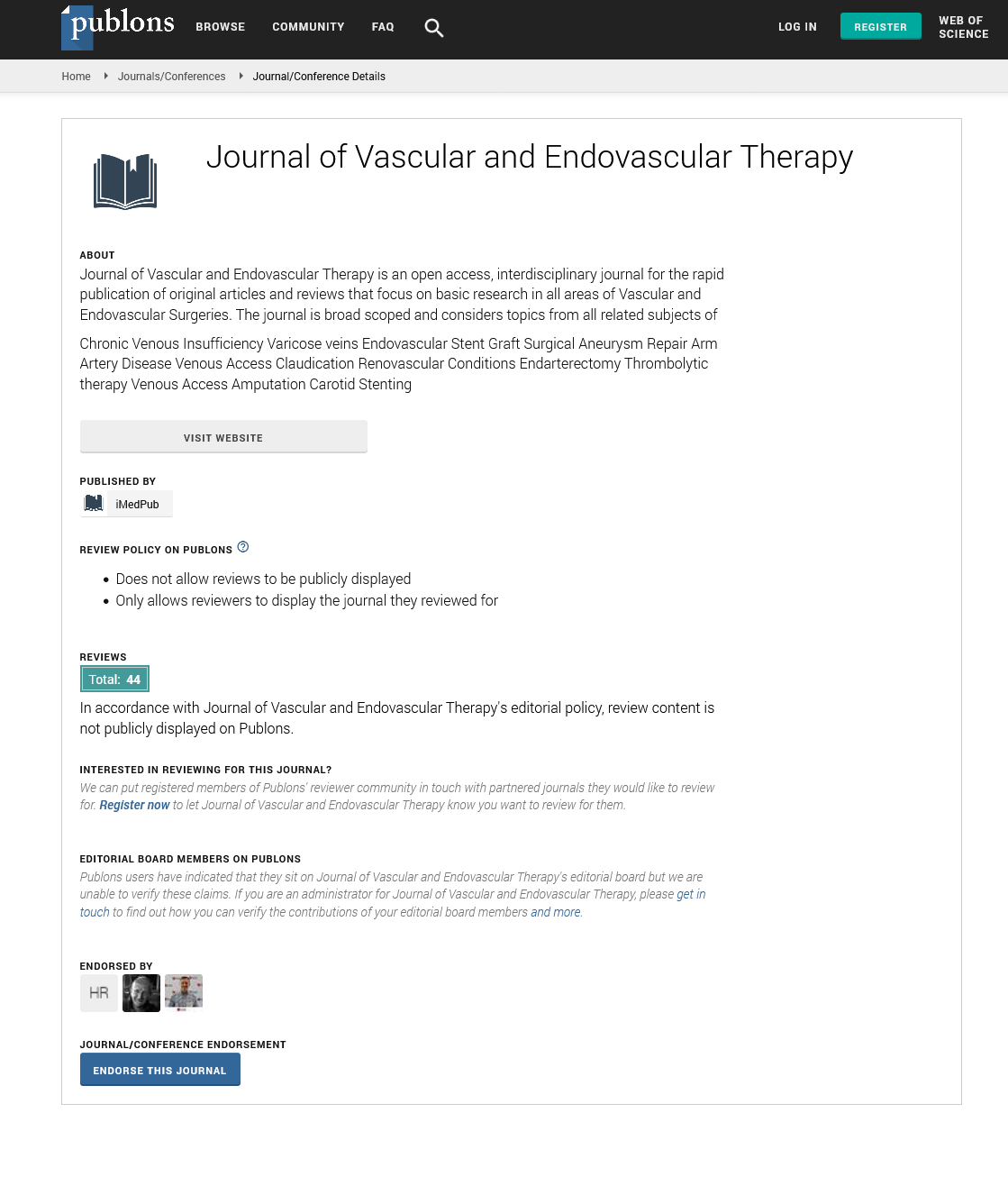ISSN : 2634-7156
Journal of Vascular and Endovascular Therapy
Happily EVAR after? - The truth about EVAR
4th Edition of World Congress & Exhibition on Vascular Surgery
March 28-29, 2019 Rome, Italy
Ziyan Kassam
King’s College London, United Kingdom
Posters & Accepted Abstracts: J Vasc Endovasc Therapy
DOI: 10.21767/2573-4482-C1-006
Abstract
Endovascular aneurysm repair (EVAR) for abdominal aortic aneurysm (AAA) repair has been responsible for a seismic shift in the management of AAAs. Compared to traditional open surgical repair (OSR), EVAR is associated with significantly a improved peri-operative morbidity and mortality. As the technology and applications of EVAR continue to evolve, so does the literature investigating its outcomes. Recently, longer-term follow-up results of randomised controlled trials (RCTs) comparing EVAR and OSR have been published. In light of this new evidence, this review aimed to evaluate the long-term outcomes from such prospective multi-centre RCTs, assessing the effectiveness, advantages and disadvantages of EVAR and OSR, in terms of endograft-related complications, reintervention rates, and longer-term mortality, to determine whether EVAR really is the better option. Following evaluation of the results, the early survival benefit of EVAR is not sustained, with longer-term life expectancy remaining poor regardless of operative modality. Additionally, the development of technical EVAR-related post-operative complications, predominantly endoleaks, stent-graft migration and stent-limb thrombosis requires further corrective re-intervention. Thus, lifelong imaging surveillance is crucial to determine the occurrence of such events, and plan timely intervention to prevent secondary sac rupture. However, this results in EVAR being costlier over a patient’s lifetime when compared to OSR. Despite the choice between OSR and EVAR for AAA repair remaining an individualised clinical decision, there is a greater tendency to choose EVAR, predominantly due to increased surgeon familiarity. Data from longterm trials however are based on initial EVAR device generations, thus newer stent-grafts are likely to improve safety and expand their applicability. As a result, further long-term RCTs are warranted to compare the relative benefits and disadvantages of modern EVAR devices.
Recent Publications
1. Brown L C, et al. (2004) The UK endovascular aneurysm repair (EVAR) trials: design, methodology and progress. European Journal of Vascular and Endovascular Surgery 27(4):372-381.
2. Prinssen M, Buskens E and Blankensteijn J D (2002) The Dutch randomised endovascular aneurysm management (DREAM) trial:
Biography
Google Scholar citation report
Citations : 177
Journal of Vascular and Endovascular Therapy received 177 citations as per Google Scholar report
Journal of Vascular and Endovascular Therapy peer review process verified at publons
Abstracted/Indexed in
- Google Scholar
- Open J Gate
- Publons
- Geneva Foundation for Medical Education and Research
- Secret Search Engine Labs
Open Access Journals
- Aquaculture & Veterinary Science
- Chemistry & Chemical Sciences
- Clinical Sciences
- Engineering
- General Science
- Genetics & Molecular Biology
- Health Care & Nursing
- Immunology & Microbiology
- Materials Science
- Mathematics & Physics
- Medical Sciences
- Neurology & Psychiatry
- Oncology & Cancer Science
- Pharmaceutical Sciences
